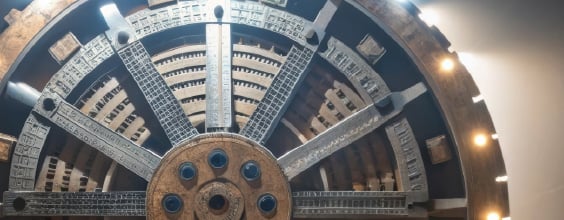If you’ve ever visited a major urban centre, you’ve likely had first-hand experience with the frenetic pace of busy, bustling public transit systems. In a city like Toronto, over 533 million riders use the system each year — and that number is on the rise. By 2030, public transit ridership in North America is projected to increase by 30 per cent.
As always, growing demand means a need for more transit options. Integrating light-rail transit (LRT) lines into urban ecosystems is one way that some municipalities are scaling up. But how can we design transit systems to help ensure that riders get home safely? WSP’s most recent whitepaper shares insights from leading experts on our transportation team.
Impacts of increased ridership
With population density in urban centres growing and demand for public transit increasing, navigating crowded trains and platforms can pose an ever-looming safety risk.
The safety risks only increase when people are distracted, rushed, or aren’t paying attention to their surroundings. People using their smartphones for music, texting, email, internet or apps face increased risk of possible injury due to distraction.
When rail tracks are at grade level, pedestrians share the same space with light rail vehicles and sometimes stray onto the tracks, which contributes to injuries.
To ensure everyone has a safe journey and a safe experience when involved with public transit, it’s important to reduce safety incidents. That’s why our team decided to research the link between transit design and safety behaviours. Smart solutions have the potential to be cost-effective for reducing incidents caused by unsafe behaviours — behaviour around LRT networks can be improved with just a bit of help from clever design and technology.
The power of suggestion
So, how can we design for optimal safety on an urban LRT line? There are several architectural methods that can help steer traffic — and suggest behaviour — to improve passenger safety both on and off the trains.
One example we discuss in the whitepaper is that of “nudging” behaviour. “Nudging” uses subtle positive reinforcement and indirect suggestions to nudge people towards safer behaviour. For instance, using footprint symbols on escalators guides people to either stand still on one side or walk up the escalator on the other side.
We can also make use of technology to help shape behaviour. Technology is already widely used to plan trips and monitor real-time transit movements. Similar technology could be used to “push” information to travellers when they are near transit facilities; for example, to warn of vehicles approaching a crossing.
Using design to influence safety behaviours can be highly beneficial and effective, because the look and feel of architectural elements surrounding an LRT corridor can nudge people to be more aware of potential dangers in their immediate environment.















